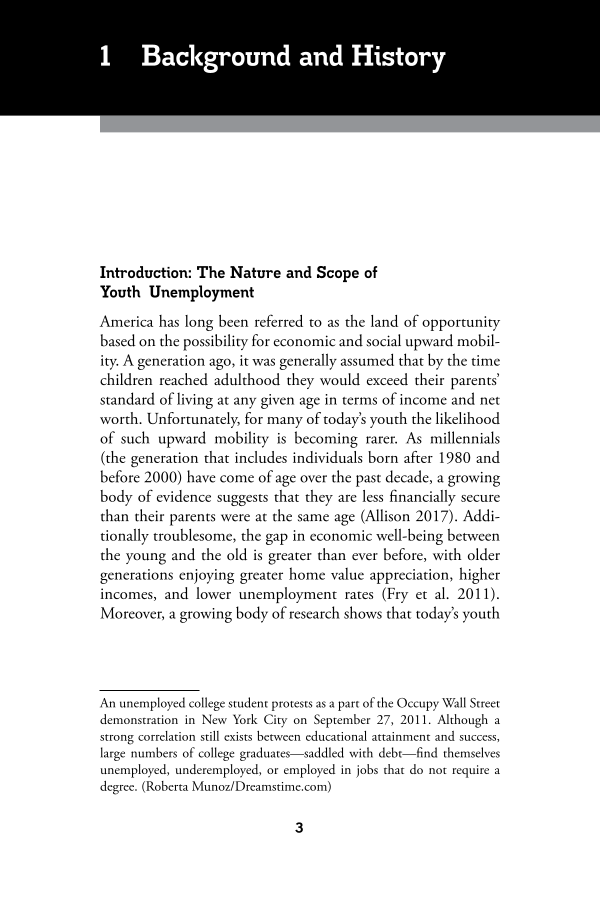3 Introduction: The Nature and Scope of Youth Unemployment America has long been referred to as the land of opportunity based on the possibility for economic and social upward mobil- ity. A generation ago, it was generally assumed that by the time children reached adulthood they would exceed their parents’ standard of living at any given age in terms of income and net worth. Unfortunately, for many of today’s youth the likelihood of such upward mobility is becoming rarer. As millennials (the generation that includes individuals born after 1980 and before 2000) have come of age over the past decade, a growing body of evidence suggests that they are less financially secure than their parents were at the same age (Allison 2017). Addi- tionally troublesome, the gap in economic well-being between the young and the old is greater than ever before, with older generations enjoying greater home value appreciation, higher incomes, and lower unemployment rates (Fry et al. 2011). Moreover, a growing body of research shows that today’s youth 1 Background and History An unemployed college student protests as a part of the Occupy Wall Street demonstration in New York City on September 27, 2011. Although a strong correlation still exists between educational attainment and success, large numbers of college graduates—saddled with debt—find themselves unemployed, underemployed, or employed in jobs that do not require a degree. (Roberta Munoz/Dreamstime.com)
Document Details My Account Print multiple pages
Print
You have printed 0 times in the last 24 hours.
Your print count will reset on at .
You may print 0 more time(s) before then.
You may print a maximum of 0 pages at a time.
































































































































































































































































































































